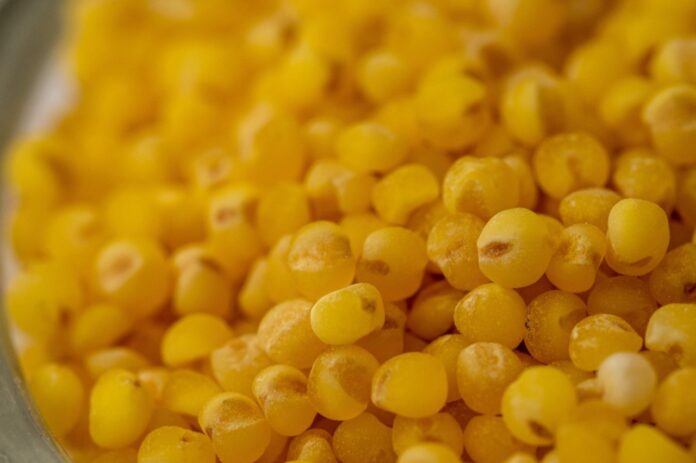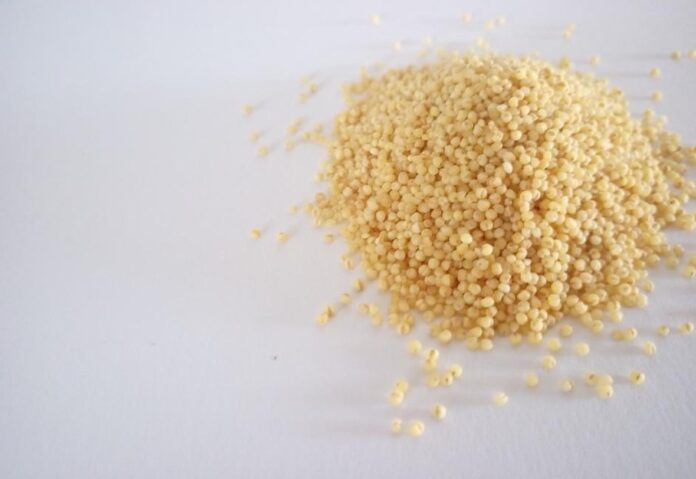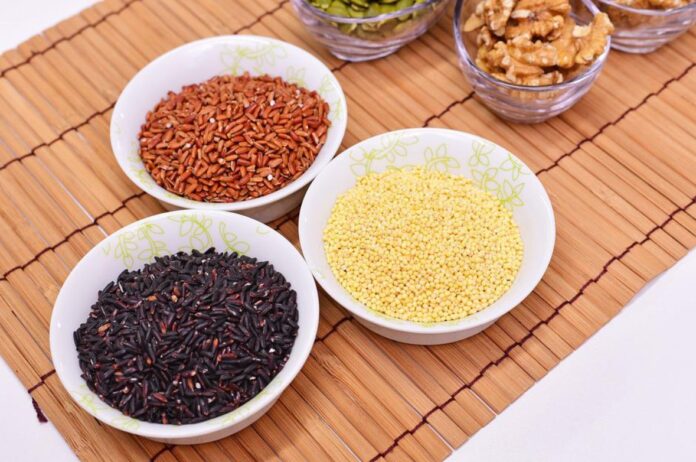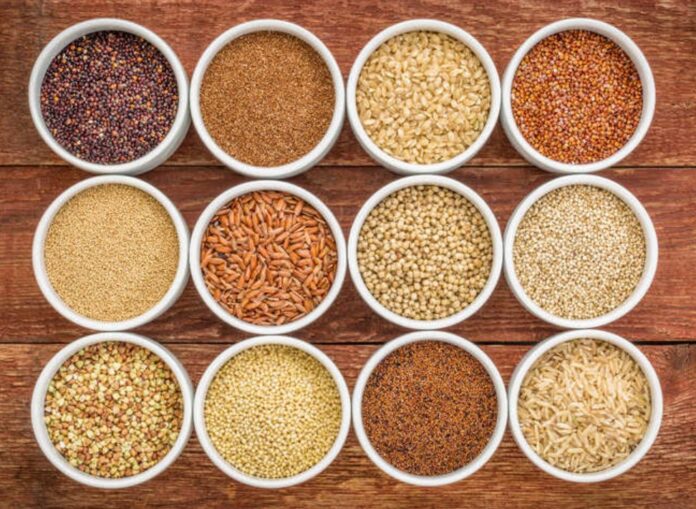
Table of Contents
Millet is one of the members of the Poaceae family, mostly known as a cereal grain.
Although there are various types around the world, the most popular one is pearl millet.
People usually choose to eat it in combination with spices and vegetables or as a sweet dessert. In our opinion, it’s an excellent gluten-free rice replacement. Here is how to use this combination of vitamins and carbohydrates in your daily diet plan:
The best ways to consume millet

Because of its health benefits, like reducing heart diseases and its vitamin B complex, it would be great to choose to eat this nutrient at least once a week. This can easily fit your gluten-free diet or any other regimen you choose, so you can make your own combinations. This is how we prefer to eat it:
1. Cooked
The simplest way is to use it as a rice alternative. This means you can prepare it the same way you cook rice. Add two cups of water and place on medium heat until it boils. Leave one cup of millet ( approximately 175 grams) to cook for about 20 minutes, and enjoy your meal.
2. Millet porridge
To make porridge, cook the millet in three cups of water. In this case, one cup of millet will be enough. If you want to make it more creamy, use plant-based milk, like coconut milk.
While the millet is warm, add the sweetener of your choice. We recommend stevia or a more healthy option-honey. Then, choose some nuts and fruit you’ll add, and that’s a healthy dinner or breakfast.
Extra tip: If you do have leftovers, you can leave them in the fridge and heat them in the microwave the next day.
3. Make a salad
Fresh summer salads are the most popular ways to use this cereal. Adding some walnuts, lemon juice, beetroot, carrot, and broccoli will make a rhapsody of taste. Just cook the millet first as we described above and add whatever you like. It’s that simple.
4. Millet muffins
If you are willing to try another way of using this healthy nutrient, try to find millet flour. It’s equally healthy, and you can use it to make cakes. Muffins are a must if you’re asking us. Here is the recipe:
• ¾ cup of coconut milk
• ½ cup of millet flour
• ½ cup of wheat flour
• 1 tsp of vanilla
• 1 tsp of chia seeds
• ⅓ cup of canola oil
• ⅓ coconut sugar
• 1 cup of blueberries or strawberries
Mix all ingredients together and place in the oven at 375 F for 30 minutes.
Health benefits of millet

Using recipes from above, you’ll be able to make a simple and healthy choice for your body.
A Better Weigh suggests that if you are fighting obesity or simply want to make a quick breakfast or snack, try incorporating millet into your diet. It doesn’t take too much time to prepare, but it has 8.5 grams of fiber per 100 grams. This means that it contains about 1/3 of your daily intake. Great, isn’t it? Besides its excellent nutritional value, let’s see what the most amazing benefits of millet grains are:
• It supports your weight loss efforts
Millet is low in calories yet rich in essential nutrients. This combination is more than helpful for those trying to lose weight or stay fit. Besides its above-mentioned high fiber content, which can improve your digestion, this cereal grain is also known to keep you satiated for a longer time since all that fiber takes time to digest and absorb in your body. That makes millet an excellent addition to your meals to help you prevent snacking and overeating.
• It keeps your blood sugar stable
The high fiber content and a low glycemic index in millet mean your blood sugar levels won’t rise and drop suddenly. Because of that, this cereal can help you lower the risk of type 2 diabetes, as well as prevent those unwanted hunger spikes. Moreover, some studies have shown that it can reduce insulin resistance.
• It boosts your immunity
Millet is an excellent source of protein for those following a vegan-style diet. Due to its high protein content, this cereal can boost your immune system, as well as fight and prevent diseases.
• It can reduce cardiovascular risks
Millet is rich in several different nutrients that support your cardiovascular system. For instance, its magnesium content helps regulate your heart rate. Vitamin B3, also known as niacin, can reduce high levels of cholesterol and lower oxidative stress – and both of these are major contributors to a number of cardiovascular diseases.
• It’s a powerful antioxidant
This cereal is rich in ferulic acid and catechins, molecules that help your body fight oxidative stress. And while all types of millet contain a certain amount of antioxidants, their highest levels are found in foxtail millet, finger, and proso.
Different types of millet

Millets come in all different shapes and sizes! We can first divide them into two broad categories: naked and husked grains. The first group doesn’t require processing after the harvest and can be consumed right after cleaning. The second one contains an indigestible seed coat that needs to be removed prior to consumption. Besides this broad categorization, we can divide millets into smaller groups as well. Here are some of the most common ones:
• Foxtail millet contains healthy and sugar-balancing carbs, but it’s also rich in iron and calcium.
• Pearl millet, also known as Bajra, is very nutrient-dense. It’s high in magnesium, iron, calcium, protein, and fiber.
• Finger millet, or Ragi, is known as a healthier substitute for wheat and rice. It’s gluten-free, high in protein, and can aid brain development in children.
• Little millet can be an excellent companion on your weight loss journey, containing high levels of fiber and minerals such as potassium, iron, zink, and calcium, and can be used as a rice replacement.
Summary
Although millet wasn’t quite popular in our diets until recently, it’s now gained its fair share of admiration among dieters worldwide. Its potential is now recognized among numerous food and fitness enthusiasts due to its high levels of essential nutrients. Since this cereal is gluten-free, it can be easily incorporated into virtually any balanced diet. We suggest you start taking small steps and use our recipe ideas to start noticing all the amazing benefits it brings to your health.
















